KAVALA
Kavala (Greek: Καβάλα, Kavála [kaˈvala]) is a city in northern Greece, the principal seaport of eastern Macedonia and the capital of Kavala regional unit.
It is situated on the Bay of Kavala, across from the island of Thasos and on the Egnatia motorway, a one-and-a-half-hour drive to Thessaloniki (160 kilometres (99 miles) west) and a forty-minute drive to Drama (37 km (23 miles) north) and Xanthi (56 km (35 miles) east). It is also about 150 kilometers west of Alexandroupoli.
Kavala is an important economic centre of Northern Greece, a center of commerce, tourism, fishing and oil-related activities and formerly a thriving trade in tobacco.
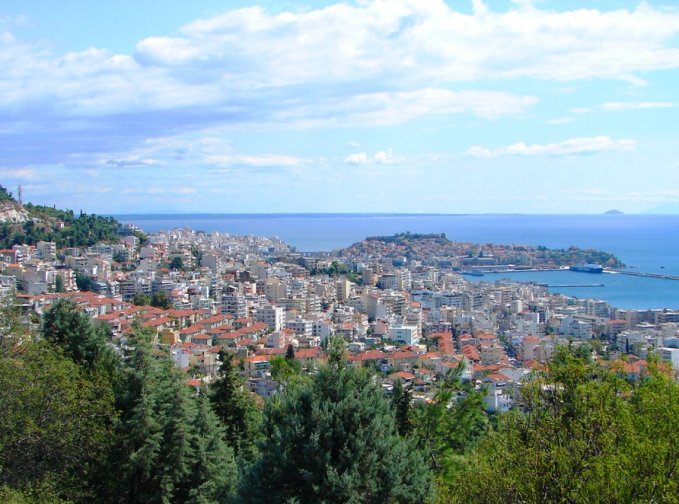 |
 |
View of the city Old Town of Kavala
Names
Historically the city is known by several names. In antiquity the name of the city was Neapolis ('new city', like many Greek colonies). In the Early Middle Ages it was renamed to Christo(u)polis ('city of Christ'), while in the High Middle Ages the name of the city was slavicised to Morunets (Bulgarian: Морунец).
Etymology
The etymology of the modern name of the city is disputed. Some mention an ancient Greek settlement of Skavala near the town. Others propose that the name is derived from the Italian cavallo which means horse. The city is situated on the ancient route of Via Egnatia; hence Cavala designated "the horses" (cavalla) where imperial couriers changed horses. The French traveller Bellon, who visited Kavala in 1547, mentions a local tradition that the city initially took its name from Alexander the Great, who named it "Bukephala", after the name of his horse Bucephalus. Another possibility is that "Kavala" is a Turkish name, given by the Turks after they refounded the city at the beginning of the 16th century. Last but not least, as the archaeologist Georgios Bakalakis first pointed out, there was a Byzantine fortress named Kavala close to the Byzantine city of Iconium - now Konya - in Asia Minor. When the Ottomans brought Muslim settlers from Iconium to establish in the territory of Kavala at the beginning of the 16th century, these people brought the name of their homeland with them. Nowadays the city's nickname is "the cyan city" (Η γαλάζια πόλη) and the symbol of the municipality of Kavala is the head of goddess Parthenos, the patron goddess of ancient Neapolis, as depicted in the coinage of the ancient Greek city.
History
Antiquity
The city was founded in the late 7th century BC by settlers from Thassos. It was one of several Thassian colonies along the coastline, all founded in order to take advantage of rich gold and silver mines, especially those located in the nearby Pangaion mountain (which were eventually exploited by Phillip II of Macedonia).
Worship of Parthenos/Virgin, a female deity of Greek Ionian origin associated with Athena, is archaeologically attested in the Archaic period. At the end of the 6th century BC Neapolis claimed independence from Thassos and began issuing its own silver coins with the head of Gorgo (γοργὀνειο) on one side. A few decades later a large Ionic temple made from Thassian marble replaced the Archaic one. Parts of it can now be seen in the town's archaeological museum.
In 411 BC, during the Peloponnesian War, Neapolis was besieged by the allied armies of the Spartans and the Thassians but remained faithful to Athens. Two Athenian honorary decrees in 410 and 407 BC rewarded Neapolis for its loyalty.
Neapolis was a town of Macedonia, located 14 km (9 mi) from the harbour of Philippi. It was a member of the Second Athenian League; a pillar found in Athens mentions the contribution of Neapolis to the alliance. The town was later conquered by the Kingdom of Macedonia.
Roman and Byzantine Era
The military Roman road Via Egnatia passed through the city and helped commerce to flourish.
It became a Roman civitas in 168 BC, and was a base for Brutus and Cassius in 42 BC, before their defeat in the Battle of Philippi.
The Apostle Paul landed at Neapolis during his first voyage to Europe.
 |
 |
Remains of the wall of Antisara Part of Via Egnatia
In the 6th century, Byzantine emperor Justinian I, an Illyrian from Taor, Dardania (Procopius), fortified the city in an effort to protect it from barbarian raids. In later Byzantine times the city was called "Christo(u)polis" (Χριστούπολις, "city of Christ") and belonged initially to the theme of Macedonia and later to the Theme of Strymon. The first surviving mention of the new name is in a taktikon of the early 9th century. The city is also mentioned in the "Life of St. Gregory of Dekapolis". In the 8th and 9th centuries, Bulgarian attacks forced the Byzantines to reorganise the defence of the area, giving great care to Christoupolis with fortifications and a notable garrison. The city remained under Byzantine control and in 837 Byzantine armed forces from Christoupolis under the command of Caesar Alexius Moselie stopped Bulgarian raids in the plain of Philippoi.
At about 830-840 AD dates a Greek inscription on the walls of a defensive tower of the fortifications of the city, still visible today, and in 926, according to another inscription (nowadays in the archaeological museum of Kavala), the General of the Theme of Strymon Vasilios Klaudon, restored the "fallen and damaged" defensive walls.
In the mid of the 12th century the Arab geographer Edrisi visited Christoupolis and described it as a well fortified city and a center of sea trade. According to another inscription, also nowadays in the archaeological museum of Kavala, the Normans probably burnt the city in 1185, after they captured first Thessaloniki. Some years later, the city fell to the hands of the Lombards, after the Fourth Crusade and was liberated again by the leader of the state of Epirus, Theodorus Komnenos, in 1225.
In 1302, the Catalans failed to capture the city. In order to prevent them from coming back, the Byzantine emperor Andronikos III Palaiologos built a new long defensive wall. In 1357 two Byzantine officers and brothers, Alexios and John, controlled the city and its territory. Excavations have revealed the ruins of an early Byzantine basilica under an Ottoman mosque in the Old Town. It was used until the late Byzantine era.
Ottoman Era
The Ottoman Turks first captured the city in 1387. Kavala remained a part of the Ottoman Empire until 1912. In 1519 (Hijri 925) the town was directly owned by the Sultan as a hass, and had 22 Muslim and 61 Christian households. In the 16th century, an Aromanian that had converted to Islam in his late teenhood, Ibrahim Pasha, Grand Vizier of Suleiman the Magnificent, contributed to the town's prosperity and growth by reconstructing the late Roman (1st - 6th century AD) aqueduct. The Ottomans also extended the Byzantine fortress on the hill of Panagia. Both landmarks are among the most recognizable symbols of the city today.
Mehmet Ali, the founder of a dynasty that ruled Egypt, was born in Kavala in 1769. His house has been preserved as a museum.
20th century
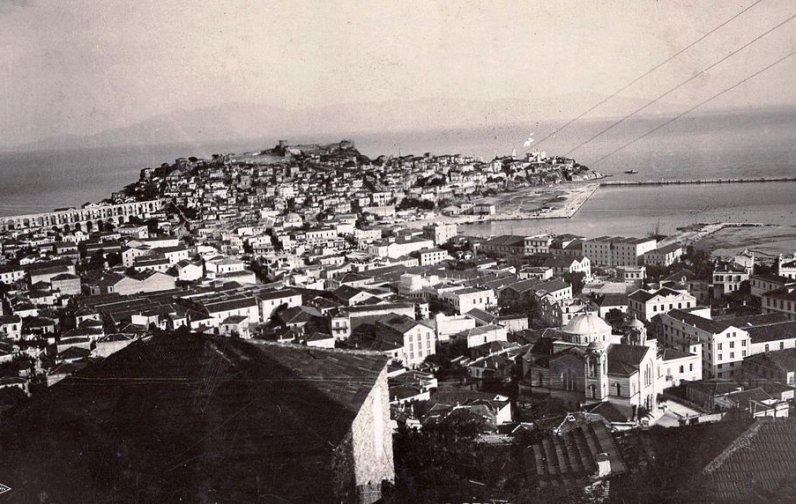 |
 |
Kavala in 1942 Shipment of the Greek troops, painting by B. Chatzis
Kavala was captured by the Bulgarian army in the First Balkan War and then captured again by the Greek navy during the Second Balkan War and was incorporated into Greece with the Treaty of Bucharest. In August 1916 remnants of the IV Army Corps, stationed at Kavala under Ioannis Hatzopoulos surrendered to the advancing Bulgarian army. These events provoked a military revolt in Thessaloniki, which led to the establishment of the Provisional Government of National Defence, and eventually Greece's entry into the First World War.
The Bulgarian occupation of the city lasted from August 1916 until September 1918. Hundreds of victims and eye-witnesses testified about the Bulgarian atrocities in the post-war inter-Allied interrogatory committee, which finally gave its report on 21 April 1919, after in situ examination of the circumstances.
After the Greco-Turkish War of 1919–1922, the city entered a new era of prosperity because of the labor offered by the thousands of refugees that moved to the area from Anatolia. The development was both industrial and agricultural. Kavala became greatly involved and developed further in the processing and trading of tobacco. Many buildings related to the storage and processing of tobacco from that era are preserved in the city. During the Interwar period and the Second Hellenic Republic, Kavala was the 4th largest city in Greece (after Athens, Thessaloniki, and Patras). In 1934 Dimitrios Partsalidis was elected mayor of Kavala, the first communist mayor in modern Greek history. The city gained temporarily by the Press, the nickname "Little Moscow".
During the Second World War and after the Battle of Greece, Bulgaria occupied the city again, following the German invasion (April 1941). During the Bulgarian occupation (1941–1944), almost the entire Jewish community of the city was exterminated as part of the Holocaust.
Following the years after the Second World War, the city faced economic decline and emigration.
In the late 1950s, Kavala expanded towards the sea by reclaiming land from the area west of the port.
In 1967, King Constantine II left Athens for Kavala in an unsuccessful attempt to launch a counter-coup against the military junta.
21st century
On July 16, 2022, Meridian Flight 3032 crashed near the village. The Ukrainian-registered Antonov An-12BK was carrying 11.5 tons of ammunition from Niš to Dhaka when the plane began to lose altitude over the Aegean and turned around, but went down 35 kilometers west of Kavala Airport. All 8 crew members were killed.
Ecclesiastical history
Neapolis was important enough in the Late Roman province of Macedonia Secunda to be a suffragan of its capital Philippi's Metropolitan Archbishopric into the frames of the Greek - Christian eastern church. In the 8th century A.D. refers for the first time a bishopric of Christoupolis and later, between 886 - 912, during the reign of the emperor Leo the Wise, Christoupolis is mentioned as one of the six bishoprics of the metropolis of Philippi. Only later, in 1260, Christoupolis became a metropolis itself. After the liberation of the city of Kavala by the Greek army during the Balkan Wars, the local church was re-established under the official title "Metropolis of Philippi, Neapolis and Thasos" till nowadays. Metropolis of Kavala established a conference center dedicated to Saint Paul, in the village of Lydia, near the spot where, according to tradition, Paul baptized saint Lydia, in the river Zygaktis. In the same spot, Metropolis established a unique open-air baptistery as well as a unique octagonal baptistery, with mosaic and stained - glass decoration, the only such temple in Greece.
 |
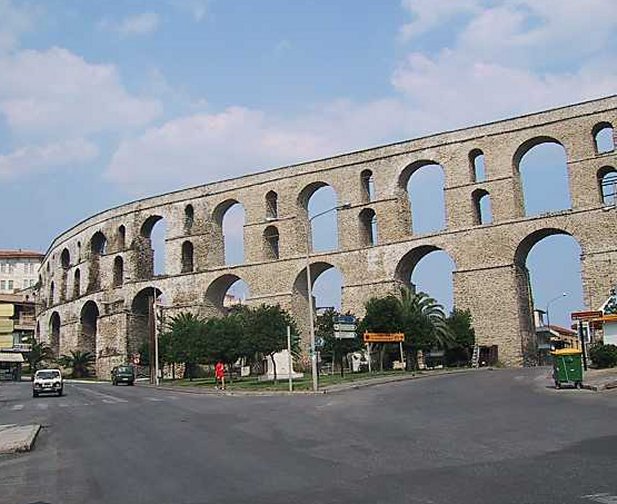 |
The fortress, known as the Castle The Kavala Aqueduct, known as Kamares
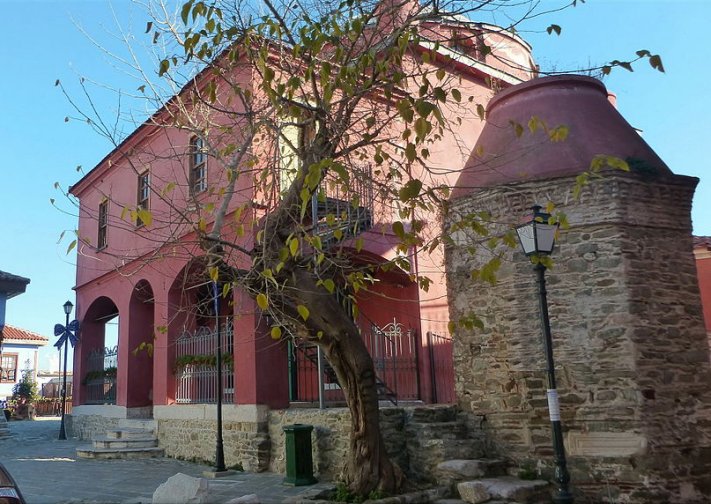 |
 |
The Khalil Bey Mosque Residence of Muhammad Ali of Egypt
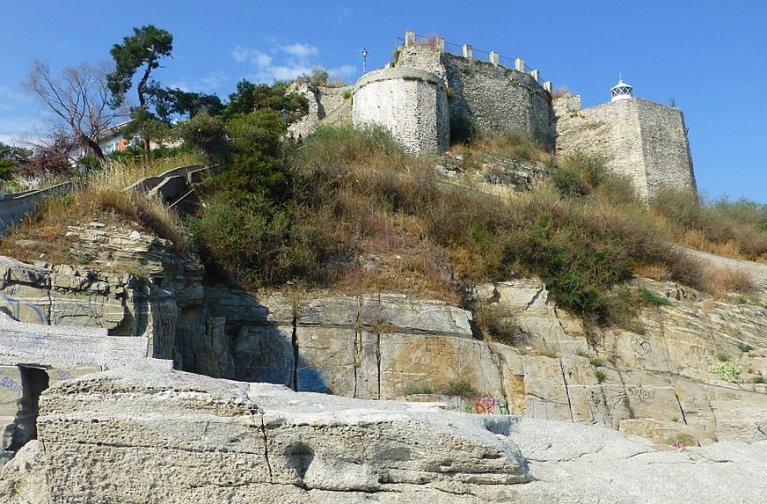 |
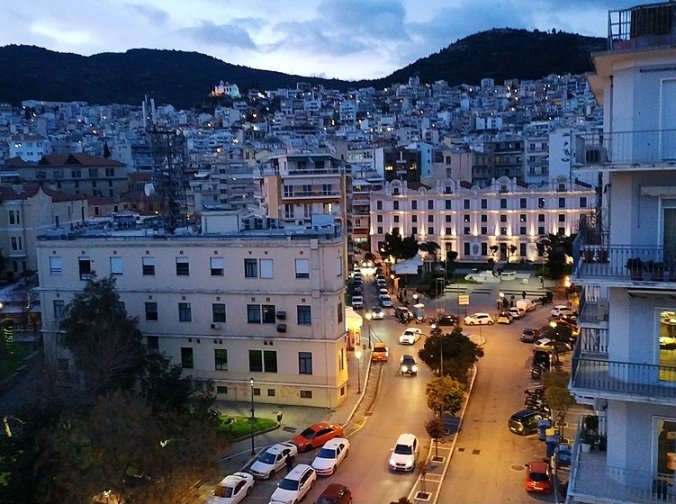 |
Virgin Mary Lighthouse In the background the municipal tobacco warehouse